How to Measure Customer Service KPIs for Success in 2025
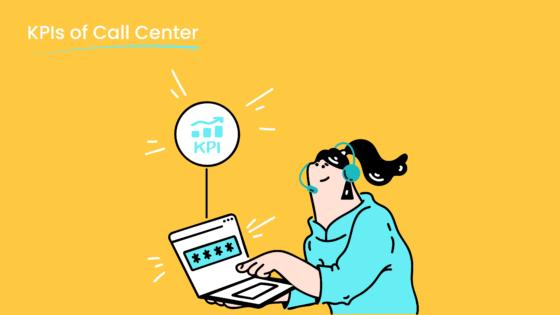
Measuring customer service KPI metrics has become essential for businesses aiming to thrive in 2025. With 33% of customers abandoning brands after one negative experience, the stakes are high. Data-driven tools like Sobot’s solutions empower you to track metrics such as CSAT and NPS, enabling timely adjustments and hyper-personalized service. This approach reduces inefficiencies and boosts customer satisfaction.
Understanding Customer Service KPIs
What Are Customer Service KPIs?
Customer service KPIs, or key performance indicators, are measurable values that help you evaluate the effectiveness of your customer service efforts. These metrics provide insights into how well your team meets customer expectations and identifies areas for improvement. For example, tracking metrics like first response time or customer satisfaction score allows you to assess the quality of your customer service interactions.
Effective customer service KPI metrics share common characteristics. They are measurable, realistic, and aligned with your business goals. The table below highlights these characteristics:
| Characteristic | Description |
|---|---|
| Relevant | Aligns with the organization’s vision and objectives |
| Measurable | Can be quantified, either quantitatively or qualitatively |
| Realistic | Fits within constraints and is cost-effective |
| Specific | Clear and focused to avoid ambiguity |
| Timely | Achievable within a specified timeframe |
| Agreed | Shared responsibility among contributors |
| Governed | Defined accountability and responsibility |
By focusing on these traits, you can select the right customer service KPIs to monitor and improve your operations.
Why Are Customer Service KPIs Important for Business Growth?
Customer service KPIs play a critical role in driving business growth. They help you measure customer satisfaction, which directly impacts customer loyalty and retention. For instance, a high customer retention rate ensures consistent revenue and reduces the cost of acquiring new customers. Metrics like service efficiency also enhance the customer journey, leading to better experiences and stronger relationships.
The table below illustrates how specific KPIs correlate with business growth:
| KPI | Correlation with Business Growth |
|---|---|
| Customer Satisfaction | Linked to customer loyalty and repeat business, essential for growth. |
| Customer Retention Rate | Indicates how well a business retains customers, crucial for sustaining revenue and growth. |
| Service Efficiency | Enhances customer experience, leading to increased customer value and loyalty, which drives growth. |
Tracking these KPIs allows you to make informed decisions that align with your business objectives.
Common Standards for Customer Service KPI Metrics
Certain customer service KPI metrics are universally recognized for their ability to measure performance effectively. These include:
- Customer satisfaction score (CSAT): Measures how satisfied customers are with your service.
- Net promoter score (NPS): Gauges customer loyalty and their likelihood to recommend your business.
- First contact resolution (FCR): Tracks the percentage of issues resolved during the first interaction.
- Average handle time (AHT): Monitors the time taken to resolve customer issues.
- Customer effort score (CES): Assesses how easy it is for customers to get their issues resolved.
These metrics help you evaluate customer service quality and identify areas for improvement. By focusing on these standards, you can ensure your team delivers exceptional service throughout the customer journey.
Key Customer Service KPIs to Track in 2025
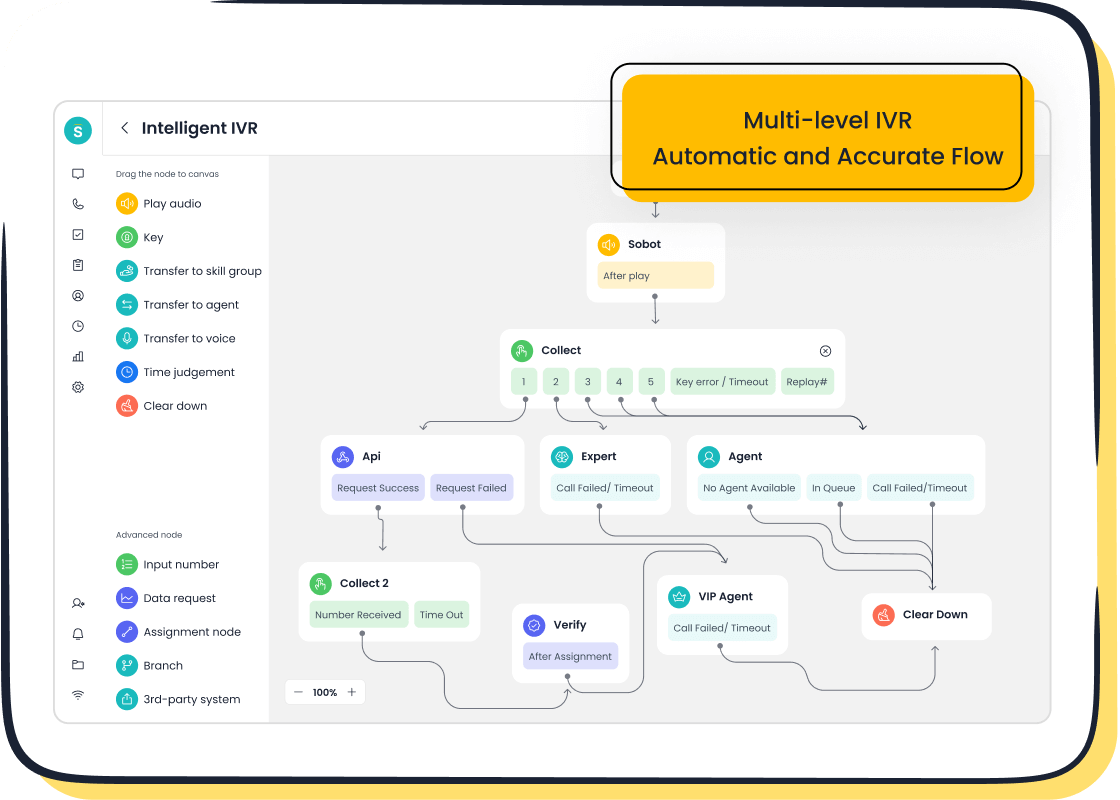
Customer Satisfaction Score (CSAT)
The customer satisfaction score measures how happy customers are with your service. After an interaction, you can ask customers to rate their experience on a scale, such as 1 to 5. This KPI is vital because improving CSAT by just one point can increase your revenue by 2.5%. In 2025, businesses will rely on AI tools to analyze feedback and identify trends, helping you make data-driven improvements. Tracking CSAT ensures you consistently meet customer expectations and build loyalty.
Net Promoter Score (NPS)
Net Promoter Score gauges how likely customers are to recommend your business. It uses a simple question: "On a scale of 0 to 10, how likely are you to recommend us?" While some studies question its reliability, NPS remains a popular metric. It works best when you focus on improving the score rather than just achieving high numbers. Personalized interactions, powered by generative AI, will play a key role in boosting NPS in 2025.
First Response Time (FRT)
First response time measures how quickly you reply to customer inquiries. Customers expect fast responses, often within minutes. Studies show that timely replies improve customer satisfaction and foster trust. In 2025, AI-driven tools will help you reduce FRT by automating initial responses and routing queries to the right agents. A faster FRT enhances your brand's reputation and keeps customers coming back.
Average Resolution Time (ART)
Average resolution time tracks how long it takes to resolve customer issues. A shorter ART indicates efficient processes and satisfied customers. In 2025, AI and predictive analytics will help you streamline workflows, reducing ART significantly. For example, automating repetitive tasks allows your agents to focus on complex problems. Monitoring ART helps you identify bottlenecks and improve overall service quality.
Customer Retention Rate
Customer retention rate shows the percentage of customers who stay with your business over time. Retaining customers is more cost-effective than acquiring new ones. Companies like Zappos and Dollar Shave Club have shown that proactive customer service strategies can boost retention. In 2025, predictive AI will help you identify at-risk customers and take action to keep them loyal.
Customer Effort Score (CES)
Customer effort score measures how easy it is for customers to resolve their issues. A low-effort experience leads to higher loyalty, with 94% of customers likely to repurchase. In 2025, AI will play a significant role in reducing customer effort by automating processes and providing self-service options. Tracking CES ensures you create a seamless experience that keeps customers satisfied.
How to Measure Customer Service KPIs Effectively
Setting Clear Goals and Benchmarks
To track and measure KPIs effectively, you need clear goals and benchmarks. Start by aligning KPIs with your business objectives. For example, if your goal is to improve customer satisfaction, focus on metrics like CSAT and CES. Involve senior team members in the KPI selection process to ensure realistic and achievable targets. Combining quantitative metrics, such as response times, with qualitative assessments, like customer feedback, provides a comprehensive view of performance.
| Best Practice | Description |
|---|---|
| Align KPIs with objectives | Ensure that KPIs reflect both team and company goals to maintain focus. |
| Involve senior team members | Engage experienced representatives for realistic and achievable metrics. |
| Consider both quantitative and qualitative metrics | Use numerical data and soft skills assessments for a full picture. |
Setting benchmarks ensures you can measure progress effectively. For instance, defining a target first response time of under 5 minutes helps you monitor improvements over time.
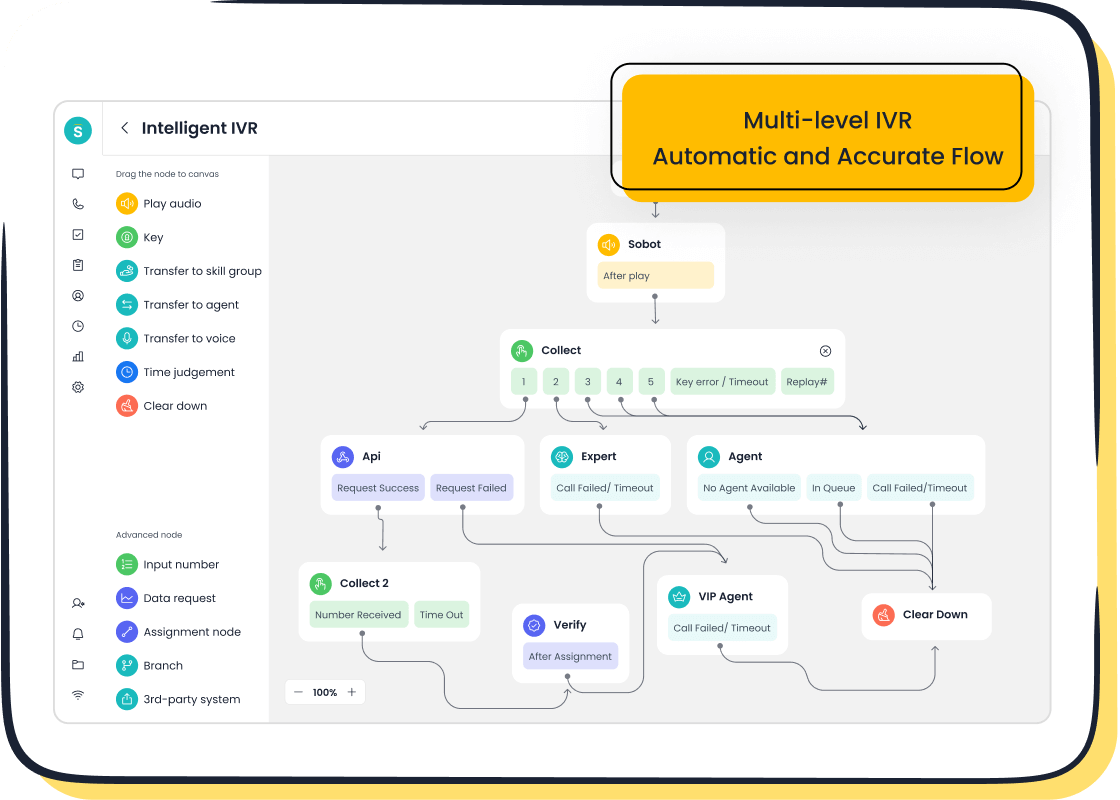
Using Tools Like Sobot’s Voice/Call Center for KPI Tracking
Sobot’s Voice/Call Center simplifies KPI tracking with its advanced features. The platform offers real-time monitoring and analysis, enabling you to measure metrics like average resolution time and first response time. Its intelligent IVR system routes calls efficiently, reducing delays and improving customer satisfaction. With AI-powered voicebots, you can automate repetitive tasks, freeing agents to focus on complex issues. The unified workspace consolidates customer data, making it easier to track and measure KPIs across channels.
For example, Samsung used Sobot’s solutions to improve agent efficiency by 30% and achieve a 97% customer satisfaction rate. By leveraging tools like Sobot’s Voice/Call Center, you can optimize workflows and enhance customer interactions.
Leveraging Customer Feedback and Surveys
Customer feedback is a goldmine for KPI measurement. Surveys help you gather insights directly from your customers, allowing you to evaluate metrics like CSAT, NPS, and CES. High response rates indicate engagement, while completion rates reflect the clarity of your survey questions. For instance, Virginia Physicians for Women improved their online reputation and average rating by directing promoters to review sites. Similarly, Trumbull County Educational Service Center increased response rates to over 90%, leading to better engagement.
- Response Rate: Measures survey participation and engagement.
- Completion Rate: Reflects the relevance of survey questions.
- Net Promoter Score (NPS): Gauges customer loyalty and likelihood to recommend.
- Customer Satisfaction Score (CSAT): Assesses satisfaction with specific interactions.
- Customer Effort Score (CES): Identifies friction points in customer journeys.
Using surveys effectively ensures you capture actionable feedback to refine your KPIs.
Regularly Reviewing and Analyzing KPI Data
Regular reviews keep your KPI tracking aligned with business goals. Automated systems with intuitive visuals, like dashboards, simplify performance monitoring. Control charts help you track trends over time, ensuring your actions yield results. Continuous evaluation of improvement strategies maintains focus on data-driven decisions. Reporting and sharing insights with your team fosters collaboration and drives performance improvements.
For example, analyzing first response time trends can reveal bottlenecks in your workflow. Addressing these issues ensures faster responses and higher customer satisfaction. Regular reviews help you stay proactive and adapt to changing customer needs.
Strategies to Improve Customer Service KPI Performance
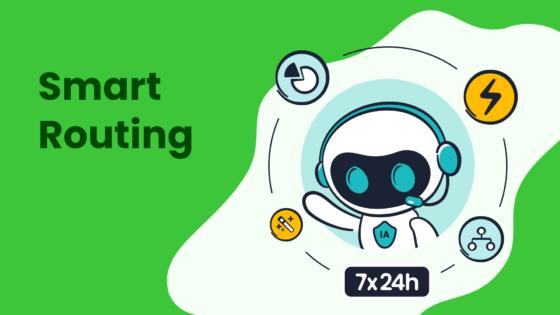
Training and Upskilling Customer Service Teams
Investing in training programs for your customer support team can significantly improve KPI performance. Studies show that 76% of employees feel more confident when they have quick access to training and coaching. Additionally, 94% of employees would stay longer at their jobs if their company invested in their learning. By equipping your team with the right skills, you can reduce churn and improve customer retention.
Effective training programs should focus on both technical skills and soft skills, such as empathy and communication. For example, using analytics tools like Sobot’s Voice/Call Center can help your team identify areas for improvement. This platform provides real-time monitoring and data insights, enabling targeted coaching sessions. Upskilling your team not only boosts their confidence but also enhances the overall customer experience.
Implementing AI and Automation with Sobot Solutions
AI and automation can transform how your customer support team operates. Sobot’s solutions, such as its AI-powered Voice/Call Center, streamline workflows by automating repetitive tasks. For instance, the intelligent IVR system routes calls efficiently, reducing response times and improving customer satisfaction.
Case studies highlight the impact of AI integration. In the hospitality industry, businesses using AI tools improved guest satisfaction scores by addressing feedback more effectively. Similarly, retail companies saw increased customer loyalty through consistent responses. These outcomes demonstrate how AI and automation can enhance metrics like response rate and customer sentiment, driving better KPI performance.
| Industry | Implementation Outcome | Performance Metrics |
|---|---|---|
| Hospitality | Improved guest satisfaction scores by addressing feedback. | Response Rate, Customer Sentiment |
| Retail | Increased customer loyalty through consistent responses. | Engagement, Changes in Customer Sentiment |
Personalizing Customer Interactions
Personalization is key to delivering an exceptional customer experience. Research shows that 82% of consumers prefer brands that offer personalized experiences. Moreover, companies with strong customer experience programs are twice as likely to prioritize personalization, leading to increased sales and customer retention.
Sobot’s unified workspace consolidates customer data, enabling your team to provide tailored solutions. For example, agents can access a customer’s history to offer relevant recommendations or resolve issues more efficiently. Personalization not only improves satisfaction but also strengthens your brand image, making customers more likely to return.
| Evidence Type | Details |
|---|---|
| Enhanced Customer Satisfaction | 82% of consumers say personalized experiences influence their brand choice in at least half of shopping situations. |
| Increased Sales and Revenue Generation | Companies with top-performing customer experience programs are 2x more likely to prioritize personalization. 61% of consumers are willing to spend more with companies that customize their service. |
| Improved Brand Image and Reputation | Companies investing in personalization technology can create more relevant and engaging customer interactions. |
Creating a Feedback Loop for Continuous Improvement
A feedback loop ensures your customer support team continuously improves. This involves collecting, analyzing, and acting on feedback to refine your processes. Organizations that integrate continuous improvement into their performance systems often see better results. Setting benchmarks and monitoring progress helps you identify areas for enhancement.
Sobot’s analytics tools simplify this process by providing actionable insights. For example, you can track metrics like first response time to identify bottlenecks. Recognizing and rewarding team contributions to improvement efforts also motivates employees. A strong feedback loop fosters innovation and ensures your team adapts to evolving customer needs.
| Key Aspect | Description |
|---|---|
| Continuous Improvement | Feedback loops are essential for driving innovation and efficiency in organizations. |
| Mechanism | They enable the collection, analysis, and action on feedback from stakeholders, creating a cycle of enhancement. |
| Implementation | Effective implementation involves setting benchmarks, monitoring progress, and regularly gathering feedback. |
Aligning Customer Service KPIs with 2025 Trends
The Role of Omnichannel Solutions in Modern Customer Service
Omnichannel solutions have become essential for delivering a seamless customer experience. In 2025, customers expect consistent service across all platforms, whether they interact via email, social media, or in-store. By integrating these channels, you can ensure that customers receive the same level of service, regardless of how they reach out.
Omnichannel strategies rely on advanced technologies to enhance operations. For example, AI-driven chatbots provide instant support, while predictive analytics forecast customer preferences. These tools not only improve efficiency but also personalize the experience for each customer. The table below highlights key trends shaping omnichannel solutions:
| Trend/Technology | Description |
|---|---|
| AI and Data Analytics | Enhances customer experiences and streamlines operations by analyzing consumer data. |
| Predictive Analytics | Forecasts customer preferences, optimizing inventory and personalizing recommendations. |
| Consistent Omnichannel Presence | Ensures customers receive service across all platforms, enhancing the overall customer experience. |
Sobot’s Omnichannel Solution exemplifies this trend. It consolidates customer interactions into a unified workspace, enabling your team to deliver personalized and efficient service. By adopting such solutions, you can stay ahead in meeting customer expectations.
Leveraging Predictive Analytics for Better Insights
Predictive analytics transforms how you understand and serve your customers. By analyzing historical data, you can anticipate customer needs and tailor your services accordingly. For instance, predictive tools can identify patterns in customer behavior, helping you optimize inventory or recommend products.
In 2025, businesses will increasingly use predictive analytics to enhance customer satisfaction. Imagine a retail store that predicts when a customer might need a product refill and sends a timely reminder. This proactive approach not only improves the customer experience but also boosts loyalty. Sobot’s analytics tools integrate seamlessly with your systems, providing actionable insights to refine your strategies.
Proactive Customer Service as a Competitive Advantage
Proactive customer service sets you apart from competitors. Instead of waiting for customers to report issues, you can address potential problems before they arise. Companies like Amazon and Apple have demonstrated the power of this approach. Amazon’s anticipatory shipping reduces support tickets, while Apple’s proactive notifications enhance loyalty.
The table below showcases how proactive strategies impact performance:
| Company | Strategy Description | Impact on Performance |
|---|---|---|
| KFC | Humorous response to chicken shortage | Improved customer perception and satisfaction |
| Amazon | Anticipatory shipping | Reduced inbound support tickets and increased satisfaction |
| Apple | Proactive notifications for device issues | Enhanced customer satisfaction and loyalty |
Sobot’s AI-powered tools enable you to implement proactive strategies effectively. By leveraging historical data, you can predict customer needs and deliver solutions that exceed expectations. This approach not only improves satisfaction but also strengthens your brand’s reputation.
Tracking customer service KPIs ensures your business stays competitive. Longitudinal studies reveal that monitoring metrics like CSAT and FRT improves service quality and customer satisfaction. Tools like Sobot’s Voice/Call Center, which increased Samsung’s CSAT to 97%, simplify this process. Start implementing these strategies today to thrive in 2025.
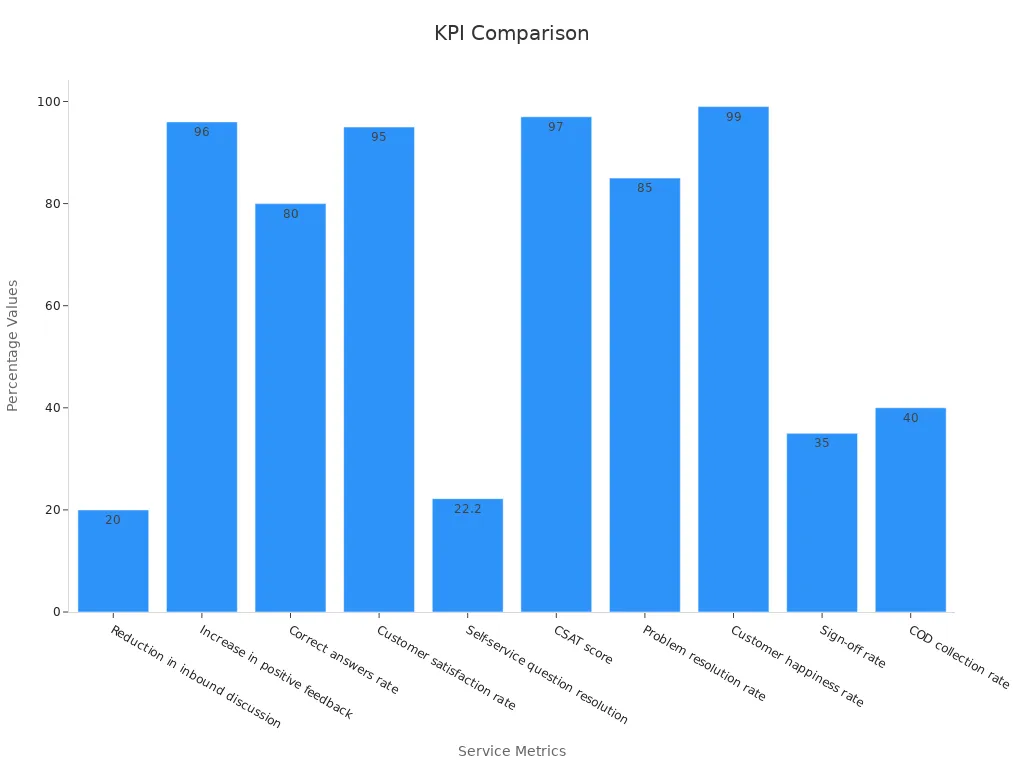
FAQ
What is the best way to start tracking customer service KPIs?
Begin by identifying key metrics like CSAT, NPS, and FRT. Use tools like Sobot’s Voice/Call Center to monitor and analyze these metrics in real time.
Tip: Set clear benchmarks to measure progress effectively.
How often should you review customer service KPI data?
Review KPI data weekly or monthly. Regular analysis helps you identify trends, address issues, and adapt strategies to improve customer satisfaction and operational efficiency.
Can AI tools improve customer service KPI performance?
Yes, AI tools like Sobot’s Voice/Call Center automate repetitive tasks, reduce response times, and provide actionable insights. These features enhance efficiency and improve key metrics like CSAT and ART.
Note: AI-driven solutions also help personalize customer interactions for better experiences.
See Also
Essential Strategies for Effective Call Center Quality Management
Best Customer Service Software Options to Consider in 2024
Enhancing Call Center Efficiency Through Effective Monitoring Techniques
Comprehensive Reviews of Leading Cloud Contact Center Services 2024
